Landscaping advice can be a bit of a mixed bag. Some rules exist for good reason—they help your yard look balanced, grow healthy, and feel like it actually belongs where it is. But others? They’re followed more out of habit than usefulness, and plenty of professionals have no problem tossing them aside when they don’t make sense for a space.
That’s the thing about working with outdoor spaces: experience teaches you when to follow the book and when to rewrite a few pages. We rounded up seven landscaping guidelines the pros stand by, and seven more they’re perfectly happy to ignore. If you’ve ever second-guessed what “rules” to follow in your own yard, this might help clear things up.
Rule 1: Embrace Native Plants

Imagine a garden teeming with life, where native plants flourish naturally. These plants are adapted to the local climate and soil, making them resilient and low-maintenance. They support local wildlife, attract pollinators, and require less water. Creating a native plant garden not only brings a touch of nature’s beauty to your backyard but also contributes to the local ecosystem’s health. It’s a win-win for you and the environment. Picture bees buzzing around colorful flowers, birds chirping from branch to branch, and the gentle rustle of leaves. That’s the magic of native gardening.
Rule 2: Prioritize Soil Health

Beneath every great garden lies the secret of rich, healthy soil. It’s the foundation upon which all plants rely. Without it, even the most beautiful layouts would struggle. Soil full of nutrients and organic matter promotes robust plant growth and resilience against pests. Professionals often say that investing in your soil is like laying the groundwork for your garden’s success. A healthy soil is teeming with life—earthworms, microbes, and beneficial fungi—all playing their part in nurturing your plants. Imagine digging your hands into this fertile ground, feeling its life-giving promise.
Rule 3: Use Mulch Wisely
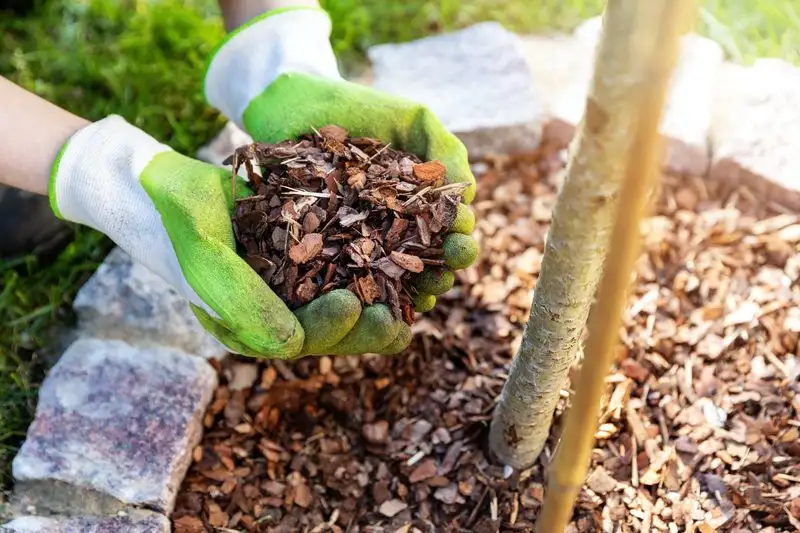
Mulch is like a protective blanket for your soil. It retains moisture, suppresses weeds, and enhances soil health. Professionals use mulch not only for its practical benefits but also for its aesthetic appeal. The variety of textures and colors available means you can choose mulch that complements your garden’s design. Proper mulching creates a polished, professional look while protecting plants from environmental stresses. Walking through a mulched garden, you can sense the balance between nature and nurture, where every element plays a part in the bigger picture. It’s all about harmony.
Rule 4: Plan for All Seasons
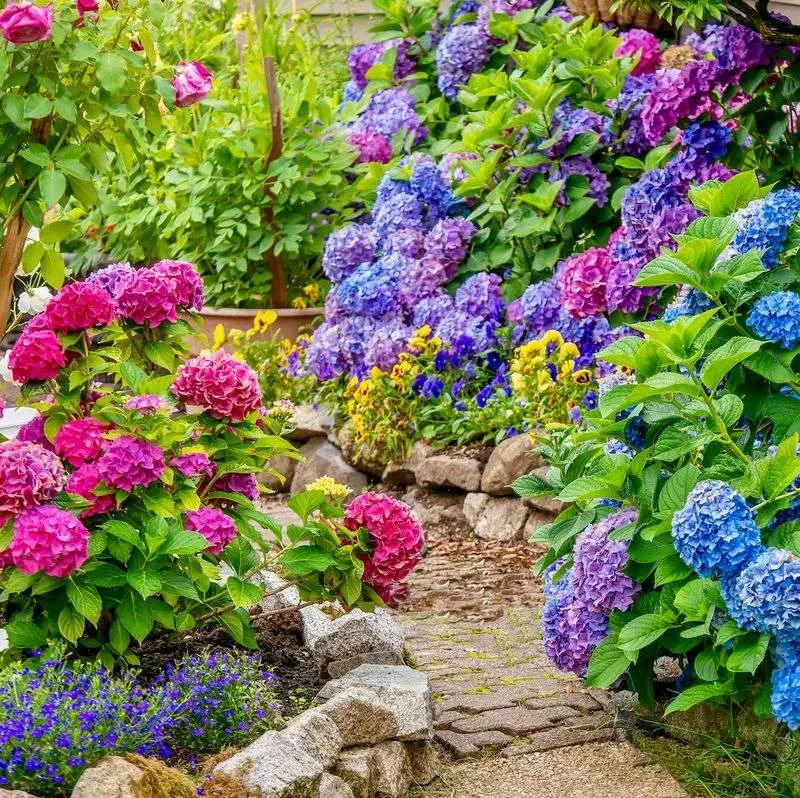
Ever wondered how some gardens look stunning year-round? It’s all about planning for every season. This strategy involves selecting plants that bloom or show interesting features like foliage or berries in different seasons. By doing so, you ensure continuous visual interest and garden vitality. Professionals often map out a year-long plan, envisioning how plants will change across seasons. This foresight not only maintains aesthetic appeal but also supports biodiversity throughout the year. Imagine a garden that surprises you with a new charm every few months, each season unveiling its unique allure.
Rule 5: Incorporate Water Features
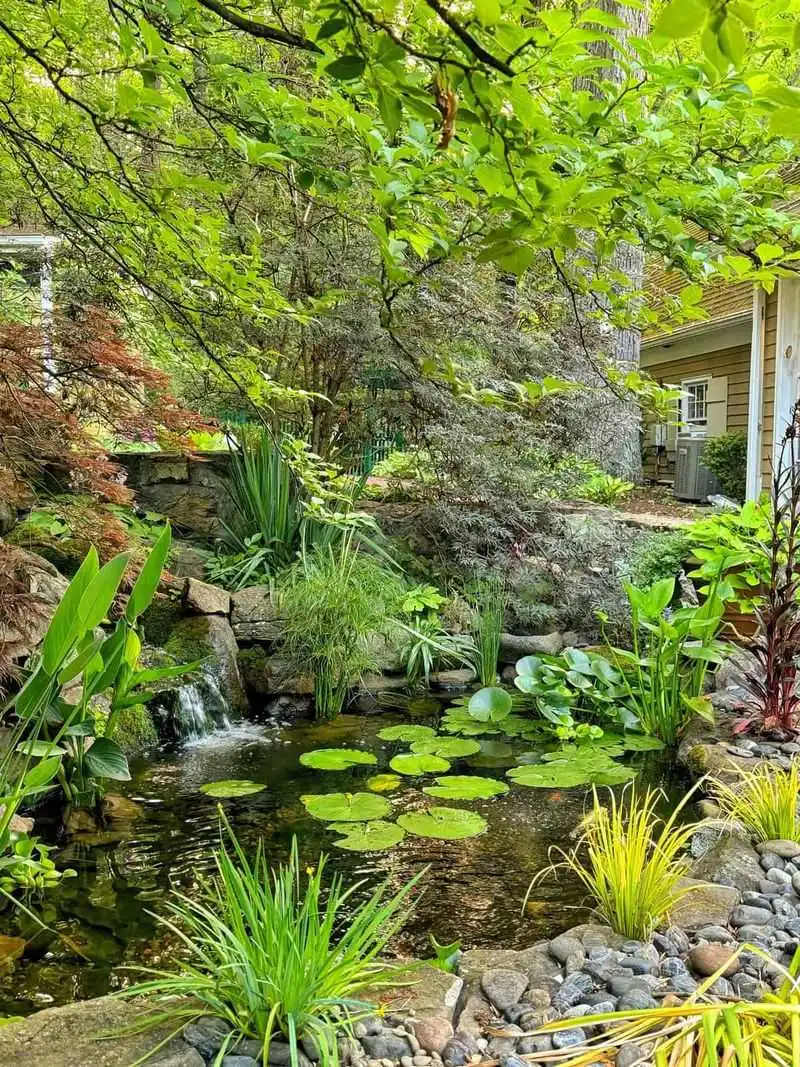
Water features add a tranquil charm to any garden. Whether it’s a simple birdbath or an elaborate pond, they create focal points and a soothing atmosphere. Professionals understand that the sound of running water can transform a garden into a peaceful retreat. It’s not just about aesthetics; water features support local wildlife, attracting birds and insects. The gentle ripple of water reflects light beautifully, creating a dance of reflections. Picture a garden where the gentle babble of water accompanies the rustling leaves and bird songs, crafting a serene escape from daily life.
Rule 6: Create Functional Spaces
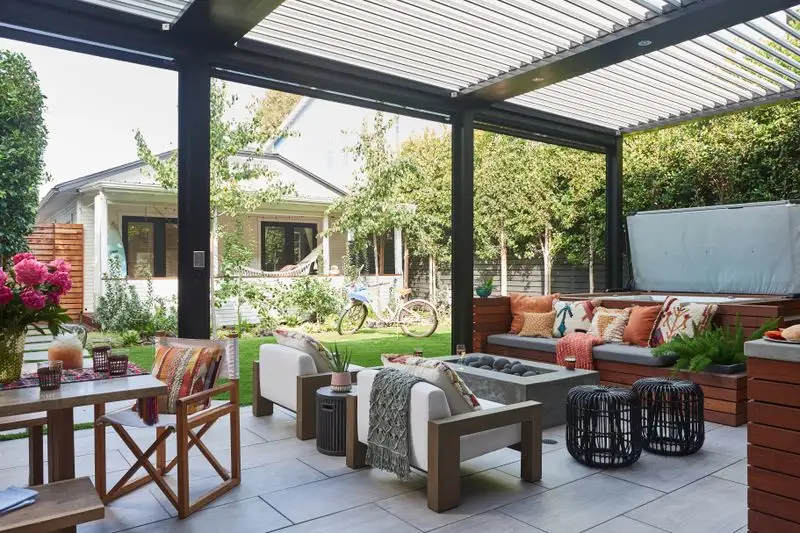
Think of your garden as an extension of your living space, offering areas for relaxation, dining, and play. Professionals design gardens with functionality in mind, ensuring each area serves a purpose while blending seamlessly with the natural environment. This approach involves creating zones—such as a cozy nook for reading, a dining area for family meals, and an open space for children to play. By designing with intention, your garden becomes more than just a pretty sight; it becomes a versatile haven. Consider the joy of dining al fresco, surrounded by greenery and the sounds of nature.
Rule 7: Balance Hardscape and Softscape
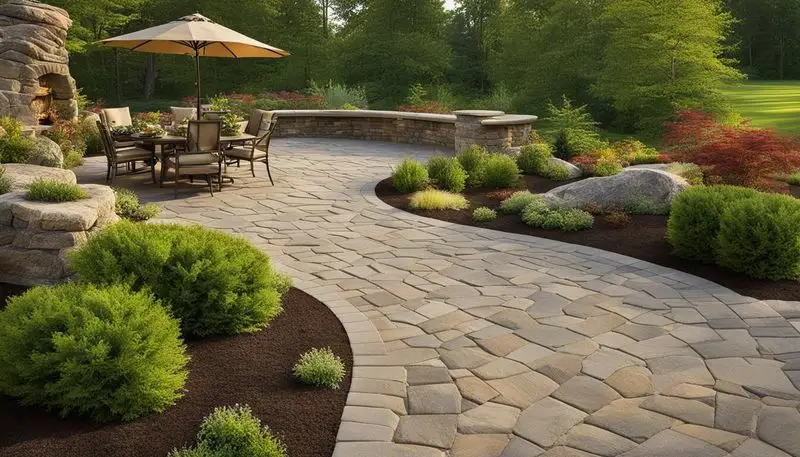
In landscaping, balance is key. Hardscape elements like paths and patios provide structure, while softscape elements like plants add life. Professionals achieve harmony by blending these elements thoughtfully. A well-designed garden feels cohesive and inviting, with each component contributing to the overall experience. The textures and colors of hardscape materials can complement the natural beauty of plants, creating visual interest and functional spaces. Picture a garden where stone paths wind through lush greenery, inviting you to explore, and cozy seating areas beckon you to pause and enjoy the view.
Rule To Break 1: Avoid Mixing Styles
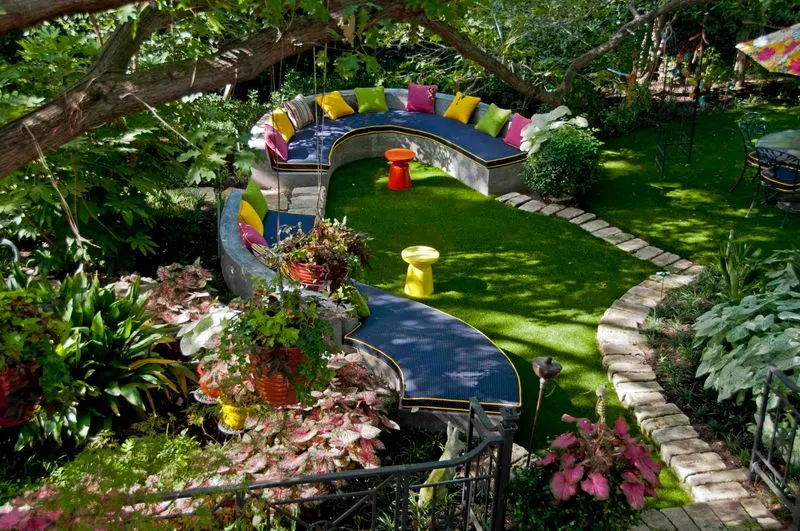
Who says you can’t mix styles? Modern landscaping embraces eclectic designs, combining different elements to create unique, personal spaces. Breaking this rule can result in gardens that reflect individuality and creativity. Mixing styles allows for a playful exploration of textures, colors, and forms. Professionals often mix rustic elements with contemporary designs to craft spaces that spark conversation and intrigue. Imagine a garden where a vintage bench sits alongside sleek sculptures, offering a blend of nostalgia and modernity. It’s about expressing personality through landscape, breaking free from rigid conventions.
Rule To Break 2: Stick to Symmetry
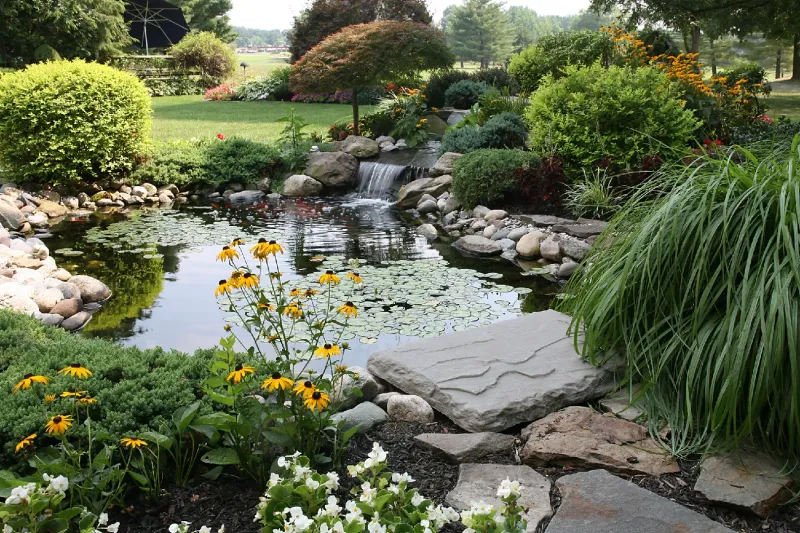
Symmetry can be pleasing, but nature thrives in asymmetry’s charm. Professionals often embrace irregular shapes and layouts to create interest and intrigue. Asymmetrical designs allow for creativity and mimic nature’s organic flow. By breaking this rule, landscapes become dynamic and engaging, inviting exploration and discovery. An asymmetrical garden might feature winding paths, varied plant heights, and unexpected focal points that capture attention. Picture yourself wandering through such a garden, where every turn reveals something new, encouraging a deeper connection with the environment. It’s an adventure in design.
Rule To Break 3: Single Color Palettes
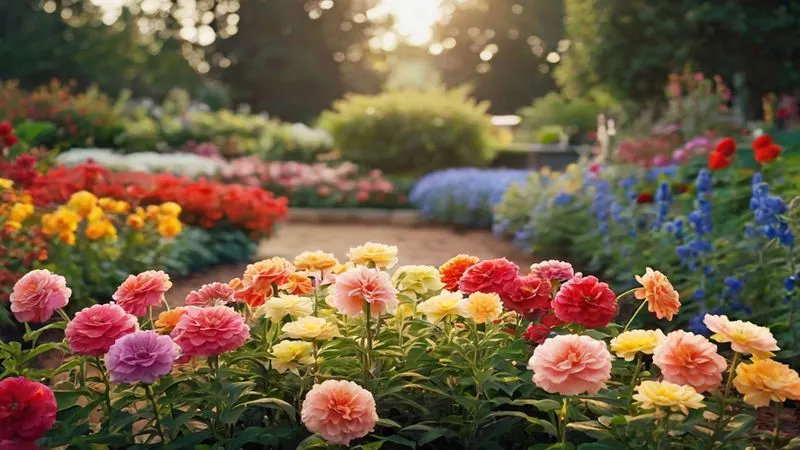
Monochrome gardens have their appeal, but don’t shy away from a riot of colors. Mixing different hues can create vibrant, lively spaces full of energy. Professionals know that a diverse palette can break the monotony and add excitement to landscapes. By experimenting with colors, gardens can evoke emotions and capture attention. Imagine walking into a garden where every corner bursts with a different shade, from fiery reds to calming blues. It’s about creating a sensory experience that’s both stunning and memorable, allowing the landscape to speak through color.
Rule To Break 4: Lawn is Essential

Lawns are traditional, but they’re not for everyone. Modern landscaping often opts for lawn-free designs, incorporating gravel paths, plant beds, and other low-maintenance options. Breaking this rule can save water and reduce upkeep. Professionals design spaces that maximize beauty and utility without a patch of grass in sight. Picture a garden where gravel paths meander through lush plantings, offering a fresh take on outdoor living. It’s a nod to sustainability without sacrificing style, where the absence of a lawn opens up a world of creative possibilities.
Rule To Break 5: Keep Plants Separate

Forget neatly separated plants. Professionals know that interplanting creates rich, diverse ecosystems. By mixing plants, gardens mimic natural habitats, fostering biodiversity and resilience. This technique allows plants to support each other, sharing resources and providing mutual protection. Interplanting breaks the monotony, adding layers of texture and color that create depth. Imagine a garden where plants weave together in harmony, like a forest floor teeming with life. It’s a celebration of nature’s complexity, inviting you to explore and discover the subtle interactions that sustain vibrant landscapes.
Rule To Break 6: Always Prune for Shape
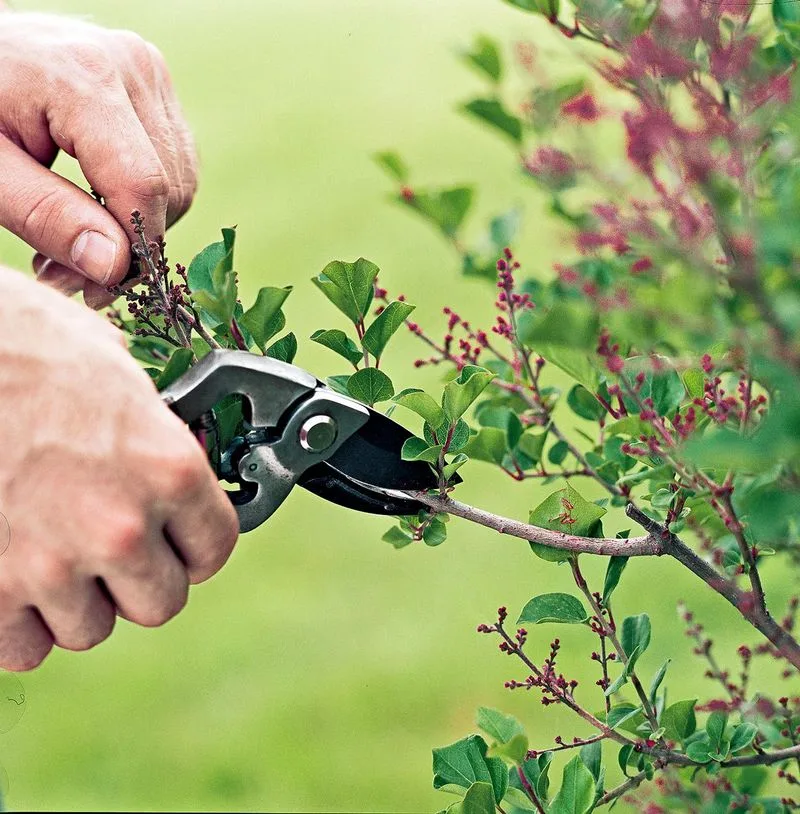
Pruning for shape is common, but embracing a wild look can be liberating. Professionals sometimes let plants grow naturally, allowing them to express their true form. This approach creates gardens that feel organic and alive, where plants aren’t constrained by rigid shapes. Embracing natural growth patterns supports plant health and encourages ecosystems to thrive. Picture a garden where vines cascade freely and shrubs stretch out, each plant contributing to a vibrant tapestry. It’s about finding beauty in imperfection and letting nature take the lead.
Rule To Break 7: Uniform Plant Sizes

Uniformity has its place, but a garden with varied plant heights can be more intriguing. Professionals often mix tall trees with mid-level shrubs and low-lying ground covers to create depth and interest. This approach mimics natural landscapes, where diversity thrives. Breaking away from uniformity allows for dynamic compositions that guide the eye and enrich the experience. Imagine a garden where towering trees provide a canopy, while smaller plants create intricate layers below. It’s a dance of heights and forms, drawing you into a landscape that’s both diverse and cohesive.

